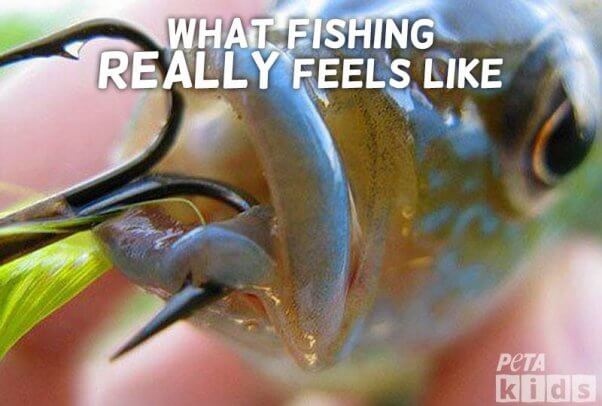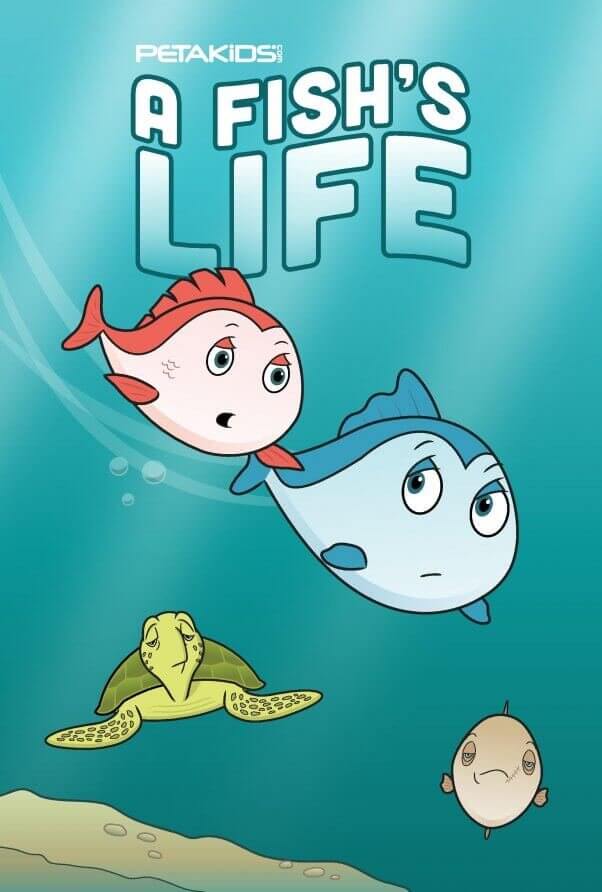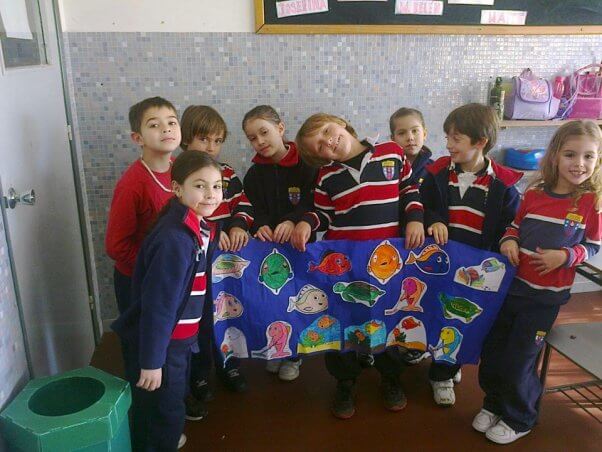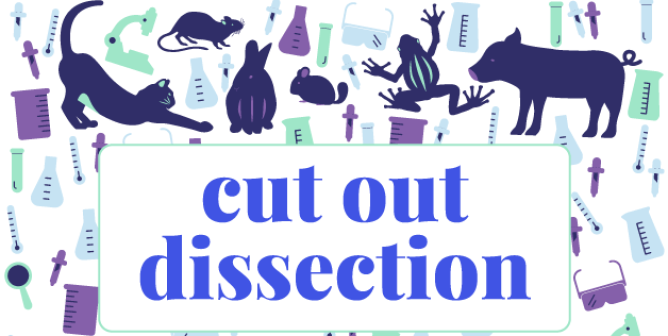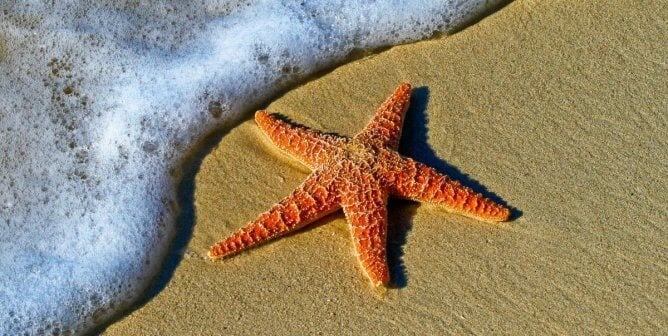Inspiring Rescue Videos to Teach Compassion for Fish
Here at TeachKind, April is Sea Life, Not Seafood Month—an occasion to celebrate the complex and interesting lives of fish with your students. Throughout the month, we’ll be offering lessons, activities, and other resources that can aid you in teaching your students how fascinating fish are and help them understand that fish deserve our consideration.
We teach our students that it’s unacceptable to hurt other humans based on the way they look, so where’s the logic in the idea that fish don’t feel pain simply because they don’t look like us and behave differently than we do?
Fish may have eyes that never close (it’s true!) and fins instead of arms and legs, but that doesn’t mean that they don’t feel pain. They have very sensitive mouths and nervous systems that closely resemble those of mammals, so they’re hurt badly when they’re caught on hooks or in nets. And just as humans can’t breathe underwater, fish can’t breathe when they’re out of water. So when they’re pulled out of their watery homes, they start to suffocate and panic. Even if fish are thrown back into the water, they can die from injuries caused by hooks.
Using the following activities, teach students that they actually have more in common with fish than they think and that all living beings—from their peers in the classroom to the tiniest fish in the sea—deserve to be treated with kindness and respect.
Inspiring Examples of Humans Helping Fish
Stories of humans helping animals are all over the internet, and these heroic acts are often caught on camera. Watching these videos with your students is an excellent way to encourage kindness both in and out of the classroom. Because most children naturally feel compassion for animals, sharing rescue stories is a great way to engage and motivate different types of learners and to encourage all students to take action to help end animal suffering.
Have students watch the following videos, each of which is only a couple of minutes long. Read the text below each video aloud in order to provide them with information about the rescue. Finally, use the discussion questions below to initiate a class discussion about the importance of exercising empathy for living beings.
One blowfish is trapped in a fishing net on the ocean floor, and another fish stays nearby. Fortunately, a kind human has found them in time. The man uses a piece of broken glass to cut the netting. It takes some time for him to get the blowfish free. He has to work very carefully so as to not hurt the fish with the glass. Meanwhile, the other fish continues to stay close. After the netting is removed from around the blowfish, the two friends swim away together.
Discussion Questions
- Why do you think the man helped the trapped blowfish?
- How do you think the fish felt before being rescued and then afterward? What makes you think so?
- Why do you think the other blowfish stayed by the trapped one’s side the whole time?
- How do you think the net ended up on the ocean floor, where fish and other animals could get caught in it?
Flooding brought on by Hurricane Harvey caused a lake to overflow, and a giant fish (called a carp) living in the lake became stranded in a shallow puddle once the waters receded. When two men found the stranded fish, they knew they had to act fast—fish can’t breathe out of water. One of them picked up and carried the fish back to the lake, which was several feet away. Once back in the lake, the fish immediately swam away.
Discussion Questions
- Why do you think the men helped the stranded fish?
- How do you think the carp felt before being rescued and then afterward?
- What might’ve happened to the carp if the men hadn’t stopped to help? What makes your think so?
- Have you ever seen an animal who needed help? Explain what you did or would tell others to do in that situation?
While hanging out at the beach, a man spotted a shark caught on a fishing line. He ran into the water and quickly—yet carefully—pulled the shark ashore by the tail. With the help of another beachgoer, who happened to have a sharp tool, the man cut the shark free from the fishing line and returned him or her to the water. The shark then swam away.
Discussion Questions
- Why do you think the human helped the shark?
- How do you think the shark felt before being rescued and then afterward? What makes you think so?
- How do you think the shark got caught on the fishing line?
- What should children do if they see an animal who needs help?
‘A Fish’s Life’
Order or download a class set of A Fish’s Life. Have younger elementary school students follow along in their books as you read the text aloud, and have older elementary school students read independently or take turns reading aloud to the class. After reading, discuss the following questions as a class to check for student understanding and inspire empathetic thought:
- Why do Hannah and Gil’s parents want them to stay away from the net? (Answer: Humans use fishing nets to try and catch fish. Every year, billions of fish are caught in nets and eaten by humans.)
- What happened to the turtle’s uncle and the brown fish’s brother? (Answer: The turtle’s uncle died in a fishing net, and the brown fish’s brother was taken away in a net.)
- How did the brown fish get the scar on his face? (Answer: He was caught on a sharp hook that tore through his mouth.)
- How do kind kids help fish? (Answer: They understand that these animals feel pain, so they don’t go fishing or eat fish.)
Take Action
There are a number of ways you and your students can be kind to fish. Coupled with a reflective writing exercise, the following suggestions can easily be incorporated into a classroom project:
- Take a field trip to a local creek, lake, beach, or pond, and help the animals who depend on that water to live by cleaning the area up. The number one cause of injuries and death to birds and other animals who live near the water is fishing litter, such as hooks, fishing line, nets, and string. When animals come to the water for a drink, they get tangled and sometimes strangled in it.
- Create signs to put up at local fishing spots reading, “Please Don’t Leave Fishing Litter Here.”
- Create a “fish-friendly” display for your local library. Include pictures of fish, interesting facts about them, and reasons why people shouldn’t fish.
- If your school fair has contests in which goldfish are given away as prizes, speak to the principal to voice your concerns. Explain that a frightened, lonely goldfish is no prize, and suggest that stuffed-animal toys or other non-animal prizes be given instead.
Stay in the loop throughout Sea Life, Not Seafood Month with the new resources that we’ll be offering weekly! Sign up for TeachKind’s free e-mails today:
By submitting this form, you’re acknowledging that you have read and agree to our privacy policy and agree to receive e-mails from us.

